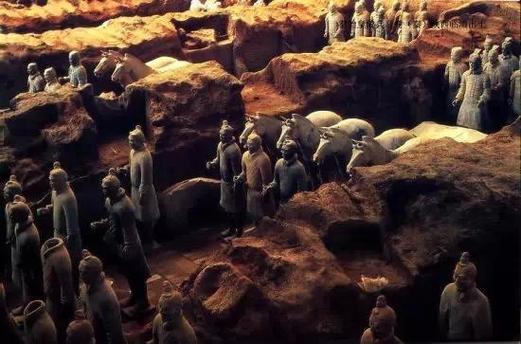
What Lies Beneath: The Mysteries of Qin Shi Huang's Tomb
No doubt thousands of statues still remain to be unearthed at this archaeological site, which was not discovered until 1974. Qin Shi Huang (d. 210 B.C.), the first unifier of China, is buried, surrounded by the famous terracotta warriors, at the centre of a complex designed to mirror the urban plan of the capital, Xianyan.
A City for the Afterlife
Qin Shi Huang's tomb complex is a microcosm of his empire, a meticulously planned city designed to provide for his every need in the afterlife. The sheer scale of the complex, covering an area of over 50 square kilometers (20 square miles), is staggering. It comprises not only the emperor's burial mound but also a vast network of pits, chambers, and corridors containing everything from weapons and chariots to the remains of sacrificed workers and concubines.
The Terracotta Army: Guardians of Eternity
The most iconic feature of the tomb complex is undoubtedly the Terracotta Army. Standing in battle formation in three massive pits, these life-sized terracotta soldiers were meant to protect the emperor from his enemies in the afterlife. Each warrior is unique, with distinct facial features, hairstyles, and armor, a testament to the skill and artistry of the Qin craftsmen.
Beyond the Warriors: Treasures Yet to Be Revealed
While the Terracotta Army has captivated the world's imagination, it is just one piece of the puzzle that is Qin Shi Huang's tomb. Historians and archaeologists believe that the emperor's burial chamber, located beneath the massive mound, holds even greater treasures.
The Enigma of the Unopened Tomb
Despite decades of excavation, the emperor's burial chamber remains unopened. This is partly due to the sheer scale and complexity of the tomb complex but also out of respect for the emperor and concerns about preserving the artifacts within.
Legends and Accounts: Glimpses into the Unknown
Ancient texts provide tantalizing glimpses into the tomb's possible contents. The historian Sima Qian, writing a century after Qin Shi Huang's death, describes a tomb filled with celestial wonders: a ceiling studded with pearls representing the constellations, a floor depicting a map of the empire with flowing rivers of mercury, and countless treasures beyond imagination.
Preserving the Past for the Future
The ongoing excavation and study of Qin Shi Huang's tomb complex offer an unparalleled opportunity to understand the beliefs, technology, and artistry of China's first unified dynasty. It is a monumental undertaking that requires careful planning, advanced technology, and international collaboration to ensure that the secrets of this ancient wonder are revealed for generations to come.
Q&A
Q: Why hasn't the emperor's burial chamber been opened?
A: The main reason is concern about preserving the artifacts inside. The tomb is believed to contain high levels of mercury, which could be hazardous to excavators and could damage the artifacts if not handled properly. Additionally, the sheer scale and complexity of the tomb pose significant logistical and technical challenges.
Q: What other treasures might be found in the tomb?
A: Ancient texts mention a vast array of treasures, including precious jewels, gold and silver objects, silks, jade ornaments, and possibly even the emperor's library, containing lost texts on history, philosophy, and science.
Q: How long did it take to build the entire complex?
A: Construction on the tomb complex began soon after Qin Shi Huang ascended the throne at the age of 13 and continued for nearly four decades until his death. It is estimated that hundreds of thousands of laborers were involved in the massive project.
note: This return of all, without the author's permission, may not be reproduced